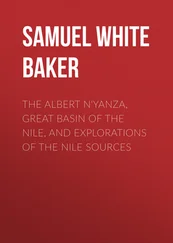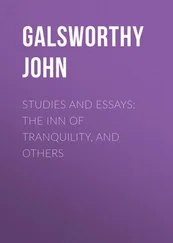White John White - Lays and Legends of the English Lake Country
Здесь есть возможность читать онлайн «White John White - Lays and Legends of the English Lake Country» — ознакомительный отрывок электронной книги совершенно бесплатно, а после прочтения отрывка купить полную версию. В некоторых случаях можно слушать аудио, скачать через торрент в формате fb2 и присутствует краткое содержание. Жанр: foreign_poetry, Поэзия, foreign_antique, foreign_prose, на английском языке. Описание произведения, (предисловие) а так же отзывы посетителей доступны на портале библиотеки ЛибКат.
- Название:Lays and Legends of the English Lake Country
- Автор:
- Жанр:
- Год:неизвестен
- ISBN:нет данных
- Рейтинг книги:4 / 5. Голосов: 1
-
Избранное:Добавить в избранное
- Отзывы:
-
Ваша оценка:
- 80
- 1
- 2
- 3
- 4
- 5
Lays and Legends of the English Lake Country: краткое содержание, описание и аннотация
Предлагаем к чтению аннотацию, описание, краткое содержание или предисловие (зависит от того, что написал сам автор книги «Lays and Legends of the English Lake Country»). Если вы не нашли необходимую информацию о книге — напишите в комментариях, мы постараемся отыскать её.
Lays and Legends of the English Lake Country — читать онлайн ознакомительный отрывок
Ниже представлен текст книги, разбитый по страницам. Система сохранения места последней прочитанной страницы, позволяет с удобством читать онлайн бесплатно книгу «Lays and Legends of the English Lake Country», без необходимости каждый раз заново искать на чём Вы остановились. Поставьте закладку, и сможете в любой момент перейти на страницу, на которой закончили чтение.
Интервал:
Закладка:
Young Lambert and his tutor were both taken prisoners. The latter, being a priest, was punished with perpetual imprisonment; Simnel was too contemptible to be an object either of apprehension or resentment to Henry. He was pardoned, and made a scullion in the King's kitchen, whence he was afterwards advanced to the rank of falconer, in which employment he ended his days.
Sir Thomas Broughton is said to have fallen on the field of battle: but there remains a tradition, that he returned and lived many years amongst his tenants in Witherslack, in Westmorland; and was interred in the Chapel there; but of this nothing is known for certain at present, or whether he returned or where he died. Dr. Burn, speaking of the grant of Witherslack to Sir Thomas, on the attainder of the Harringtons in the first year of Henry's reign for siding with the house of York, and of its subsequent grant to Thomas Lord Stanley, the first Earl of Derby, on the attainder of Sir Thomas for having been concerned in this affair of Lambert Simnel, goes on to say—"And here it may not be amiss to rectify a mistake in Lord Bacon's history of that King, (Henry VII.) who saith that this Sir Thomas Broughton was slain at Stoke, near Newark, on the part of the counterfeit Plantagenet, Lambert Simnell; whereas Sir Thomas Broughton escaped from that battle hither into Witherslack, where he lived a good while incognito , amongst those who had been his tenants, who were so kind unto him as privately to keep and maintain him, and who dying amongst them was buried by them, whose grave Sir Daniel Fleming says in his time was to be seen there."
The erection of the new chapel of Witherslack by Dean Barwick, in 1664, at a considerable distance from where the ancient chapel stood, has obliterated the memory of his once well-known grave. With this unhappy gentleman the family of Broughton, which had flourished for many centuries and had contracted alliances with most of the principal families in these parts, was extinguished in Furness.
After these affairs the King had leisure to revenge himself on his enemies, and made a progress into the northern parts of England, where he gave many proofs of his rigorous disposition. A strict inquiry was made after those who had assisted or favoured the rebels, and heavy fines and even sanguinary punishments, were imposed upon the delinquents in a very arbitrary manner. The fidelity therefore of Sir Thomas Broughton's tenants to their fallen master was not without its dangers, and is a pleasing instance of attachment to the person of a leader in a rude and perilous age.
In the wars of the Roses the Broughtons had always strenuously supported the House of York. It is however remarkable that, the manor of Witherslack having been granted to Sir Thomas by Henry the Seventh in the first year of his reign, he should have joined the Pretender in arms against that monarch in the following year.
Methop and Ulva, though distinctly named in the title and description of this manor, yet make but a small part of it. They are all included within a peninsula, as it were, between Winster Beck, Bryster Moss, and Lancaster Sands.
The fate of Lord Lovel, another of the chiefs in this disastrous enterprise, is also shrouded in mystery. It has often been told that he was never seen, living or dead, after the battle.
The dead bodies of the Earl of Lincoln and most of the other principal leaders, it was said, were found where they had fallen, sword-in-hand, on the fatal field; but not that of Lord Lovel. Some assert that he was drowned when endeavouring to escape across the river Trent, the weight of his armour preventing the subsequent discovery of his body. Other reports apply to him the circumstances similar to those which have been related above as referring to Sir Thomas Broughton; namely, that he fled to the north where, under the guise of a peasant, he ended his days in peace. Lord Bacon, in his History of Henry the Seventh, says "that he lived long after in a cave or vault." And his account has been partly corroborated in modern times. William Cowper, Esquire, Clerk of the House of Commons, writing from Hertingfordbury Park in 1738, says—"In 1708, upon the occasion of new laying a chimney at Minster Lovel, there was discovered a large vault or room underground in which was the entire skeleton of a man, as having been sitting at a table which was before him, with a book, paper, pen, etc.; in another part of the room lay a cap, all much mouldered and decayed; which the family and others judged to be this Lord Lovel, whose exit has hitherto been so uncertain."
A tradition was rife in the village in the last century to the effect that, in this hiding place, which could only be opened from the exterior, the insurgent chief had confided himself to the care of a female servant, was forgotten or neglected by her, and consequently died of starvation.
The ancient Castle or Pile of Fouldrey, (formerly called Pele of Foudra, or Futher,) stands upon a small island near the southern extremity of the isle of Walney; and is said by Camden to have been built by an Abbot of Furness, in the first year of King Edward the Third (A. D. 1327). It was probably intended for an occasional retreat from hostility; a depository for the valuable articles of the Monastery of Furness; and for a fortress to protect the adjoining harbour; all which intentions its situation and structure were well calculated to answer at the time of its erection.
It seems to have been the custom in the northern parts of the kingdom, for the monasteries to have a fortress of this kind, in which they might lodge with security their treasure and records on the approach of an enemy; of this the Castle on Holy Island, in Northumberland, and Wulstey Castle, near the Abbey of Holm Cultram, in Cumberland, are examples. It has even been said that an underground communication existed between Furness Abbey and the Pele of Fouldrey.
The harbour alluded to, appears to have been of considerable importance to the shipping of that period, when the relations of Ireland with the monks had become established. In the reign of Henry the Sixth, it is mentioned as being found a convenient spot for the woollen merchants to ship their goods to Ernemouth, in Zealand, without paying the duty; and in Elizabeth's days as "the only good haven for great shippes to londe or ryde in" between Scotland and Milford Haven, in Wales.
It was apprehended that the Spanish Armada would try to effect a landing in this harbour.
GILTSTONE ROCK;
OR, THE SLAVER IN THE SOLWAY
The Betsey-Jane sailed out of the Firth,
As the Waits sang "Christ is born on earth"—
The Betsey-Jane sailed out of the Firth,
On Christmas-day in the morning.
The wind was East, the moon was high,
Of a frosty blue was the spangled sky,
And the bells were ringing, and dawn was nigh,
And the day was Christmas morning.
In village and town woke up from sleep,
From peaceful visions and slumbers deep—
In village and town woke up from sleep,
On Christmas-day in the morning,
The many that thought on Christ the King,
And rose betimes their gifts to bring,
And "peace on earth and good will" to sing,
As is meet upon Christmas morning.
The Betsey-Jane pass'd village and town,
As the Gleemen sang, and the stars went down—
The Betsey-Jane pass'd village and town,
That Christmas-day in the morning;
And the Skipper by good and by evil swore,
The bells might ring and the Gleemen roar,
But the chink of his gold would chime him o'er
Those waves, next Christmas morning.
And out of the Firth with his reckless crew,
All ready his will and his work to do—
Out of the Firth with his reckless crew
He sailed on a Christmas morning!
Интервал:
Закладка:
Похожие книги на «Lays and Legends of the English Lake Country»
Представляем Вашему вниманию похожие книги на «Lays and Legends of the English Lake Country» списком для выбора. Мы отобрали схожую по названию и смыслу литературу в надежде предоставить читателям больше вариантов отыскать новые, интересные, ещё непрочитанные произведения.
Обсуждение, отзывы о книге «Lays and Legends of the English Lake Country» и просто собственные мнения читателей. Оставьте ваши комментарии, напишите, что Вы думаете о произведении, его смысле или главных героях. Укажите что конкретно понравилось, а что нет, и почему Вы так считаете.












